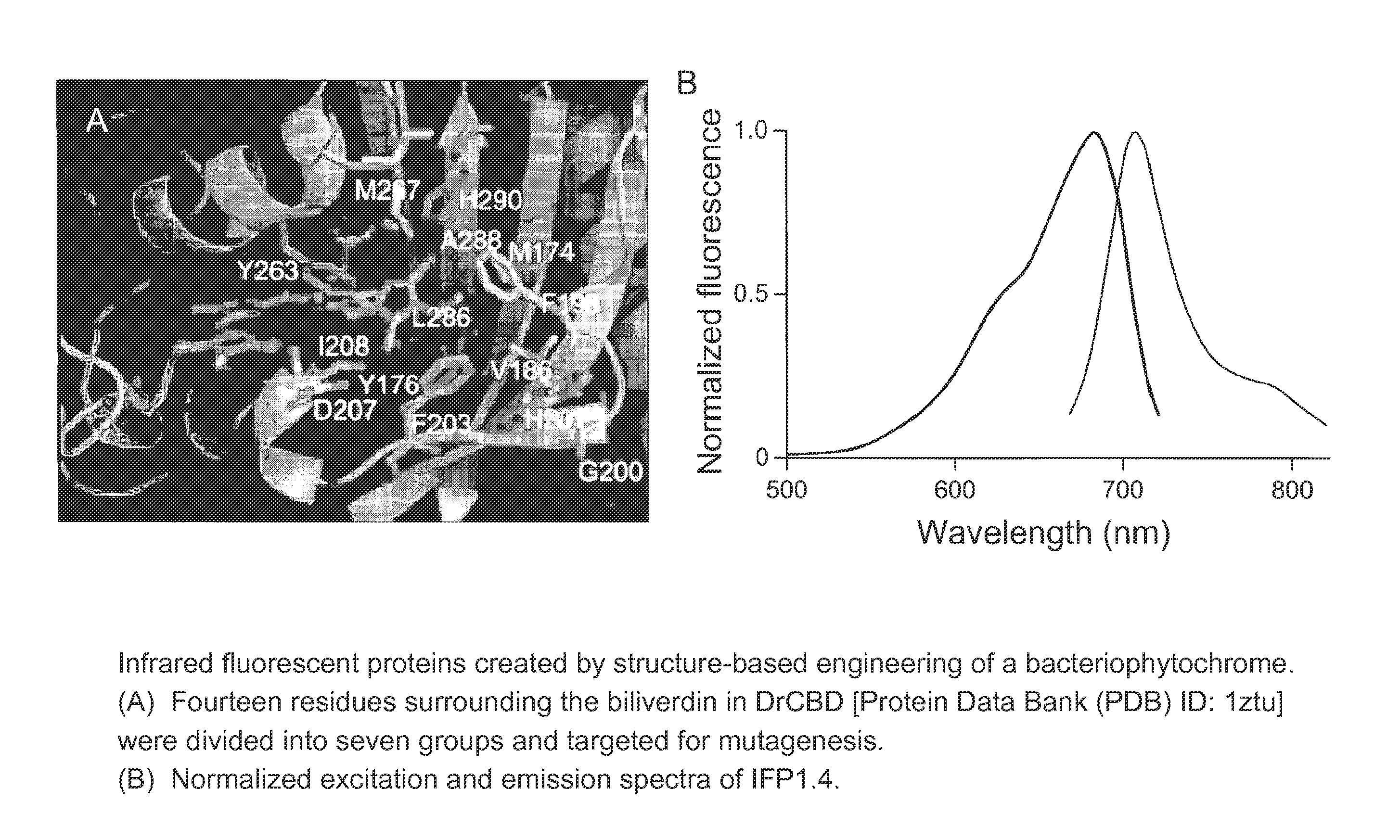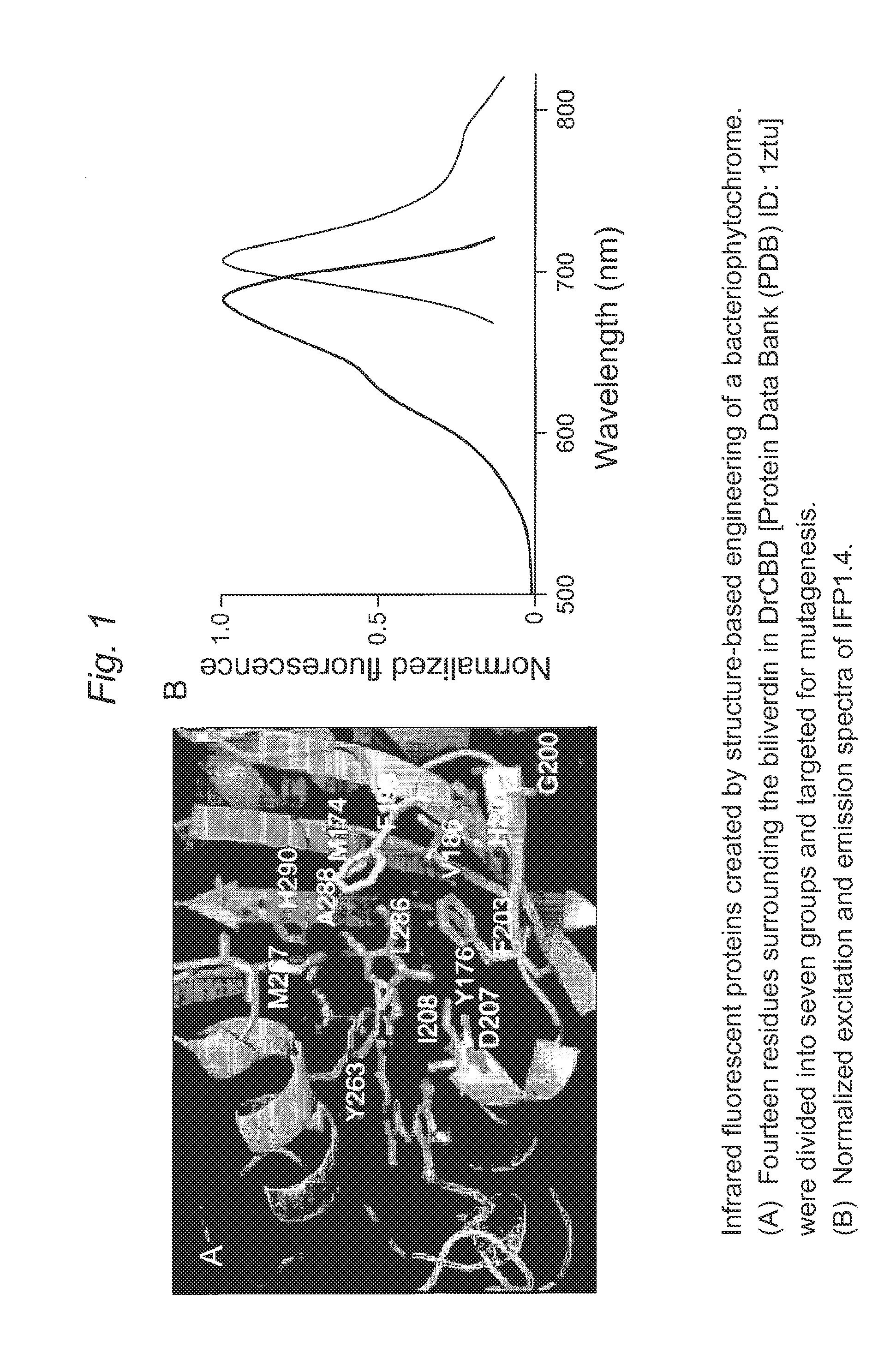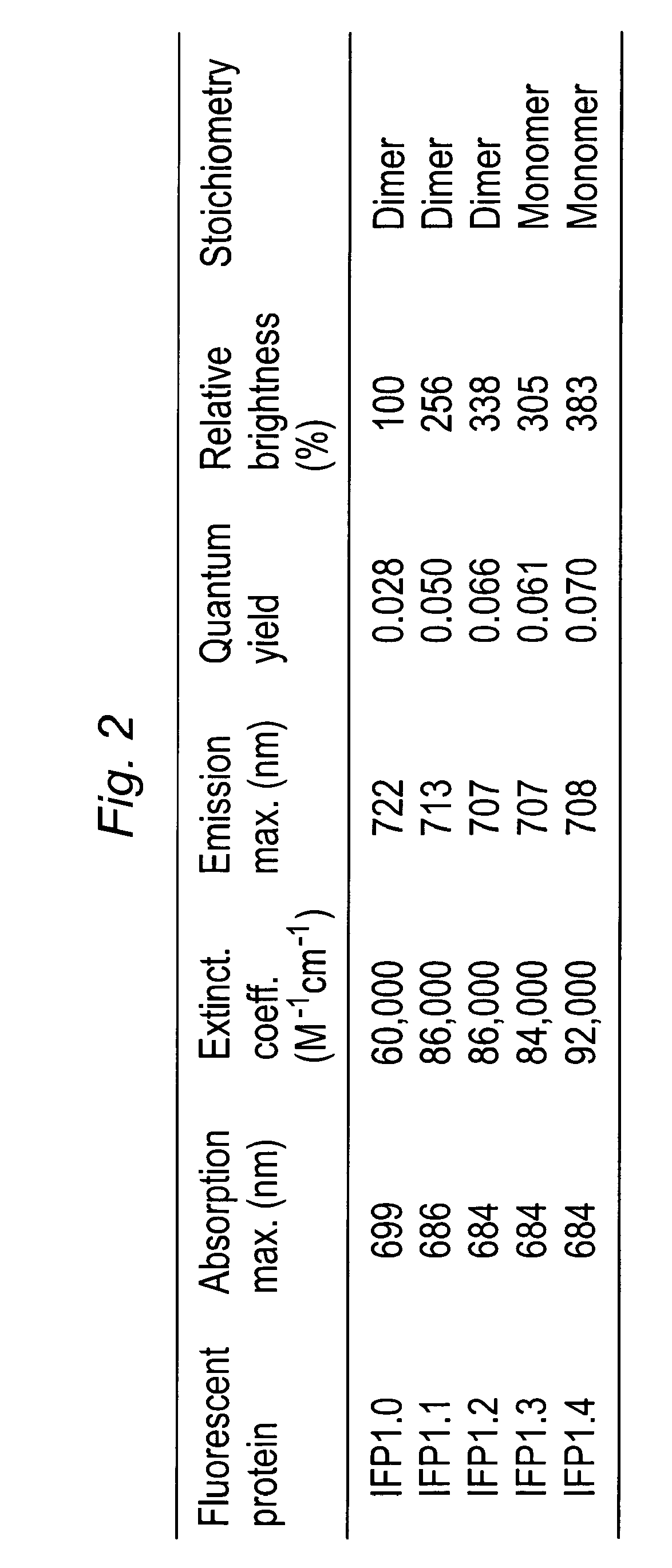Proteins that fluoresce at infrared wavelengths or generate singlet oxygen upon illumination
a technology of infrared wavelengths and proteins, applied in the field of fluorescent proteins and protein variants, can solve the problems of poor penetration of excitation light, inability to demonstrate the effect of fps in intact animals such as mice, and inability to use fps in nonbacterial systems
- Summary
- Abstract
- Description
- Claims
- Application Information
AI Technical Summary
Benefits of technology
Problems solved by technology
Method used
Image
Examples
example 1
Novel Truncation Mutants of a Deinococcus radiodurans Phytochrome
[0128]Fluorescence of IFP1.0 (SEQ ID NO: 16).
[0129]Novel truncation mutants of a phytochrome from the bacterium Deinococcus radiodurans were prepared. When expressed either in bacteria or mammalian cells, these mutant phytochromes spontaneously incorporate biliverdin, a ubiquitous intermediate in heme catabolism, and become fluorescent. The initial mutant, drCBD / D207H (SEQ ID NO:2), has excitation and emission maxima at 700 and 713 nm respectively, with quantum yield (QY)>0.03. If this protein instead incorporates protoporphyrin IX, an intermediate in heme biosynthesis, its excitation maxima are 401 / 501 / 537 / 567 nm and emission maxima 622 / 648 / 684 nm, and illumination now generates significant amounts of singlet oxygen, with a QY of singlet oxygen generation of 0.15. A second mutant, drCBD / D207H / I208T / A288V (SEQ ID NO:3), tentatively abbreviated IFP1.01 (SEQ ID NO:3), has excitation and emission maxima at 686 and 713 nm ...
example 2
Mammalian Expression of IFP Engineered from a Bacterial Phytochrome
[0134]Gene synthesis, mutagenesis and screening. A gene encoding IFP1.0 (SEQ ID NO:16) with codons optimized for Escherichia coli was synthesized by overlap extension PCR (W. P. C. Stemmer, A. Crameri, K. D. Ha, T. M. Brennan, H. L. Heyneker, Gene 164, 49 (1995)). Genetic libraries were constructed by saturation and random mutagenesis as described (N. C. Shaner et al., Nat. Biotechnol. 22, 1567 (2004)) and DNA shuffling (W. P. C. Stemmer, Nature 370, 389 (1994)). IFP1.0 (SEQ ID NO: 16) and mutants were cloned into a modified pBAD vector containing the heme oxygenase-1 gene from cyanobacteria. Libraries were expressed and screened as described (Shaner 2004). A 676 nm laser was used for FRCS screening of large libraries, with 710-900 nm emission filter.
[0135]Protein Expression and Characterization.
[0136]IFPs in the modified pBAD vector were expressed in E. coli strain TOP10. Protein purification, fluorescence character...
PUM
| Property | Measurement | Unit |
|---|---|---|
| wavelengths | aaaaa | aaaaa |
| wavelengths | aaaaa | aaaaa |
| wavelengths | aaaaa | aaaaa |
Abstract
Description
Claims
Application Information
 Login to View More
Login to View More - R&D
- Intellectual Property
- Life Sciences
- Materials
- Tech Scout
- Unparalleled Data Quality
- Higher Quality Content
- 60% Fewer Hallucinations
Browse by: Latest US Patents, China's latest patents, Technical Efficacy Thesaurus, Application Domain, Technology Topic, Popular Technical Reports.
© 2025 PatSnap. All rights reserved.Legal|Privacy policy|Modern Slavery Act Transparency Statement|Sitemap|About US| Contact US: help@patsnap.com



